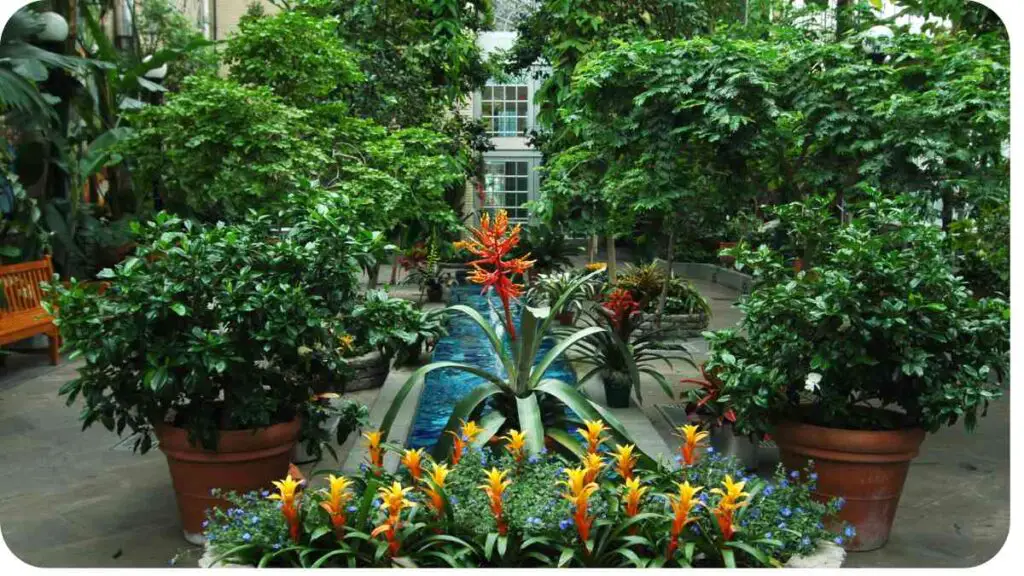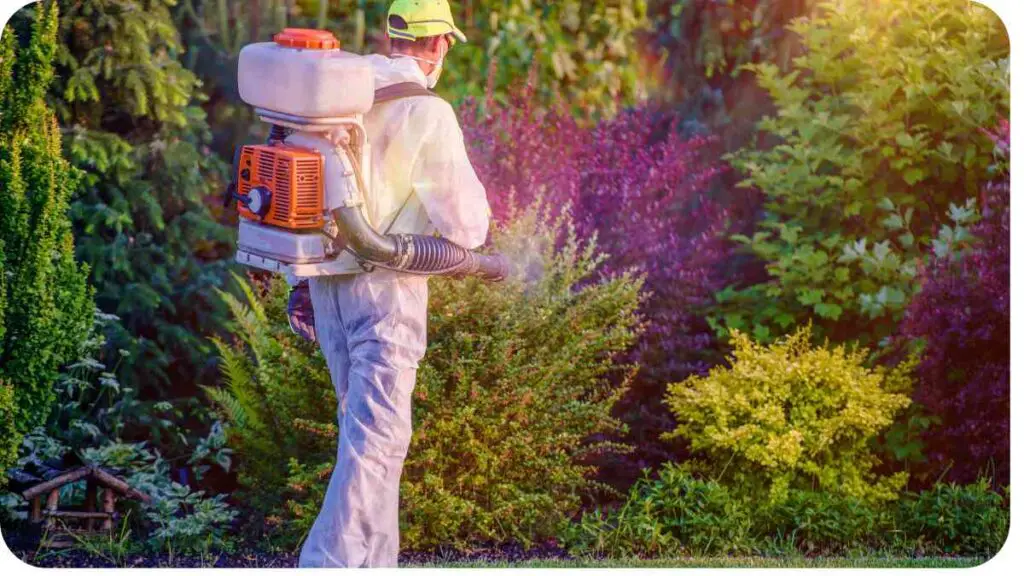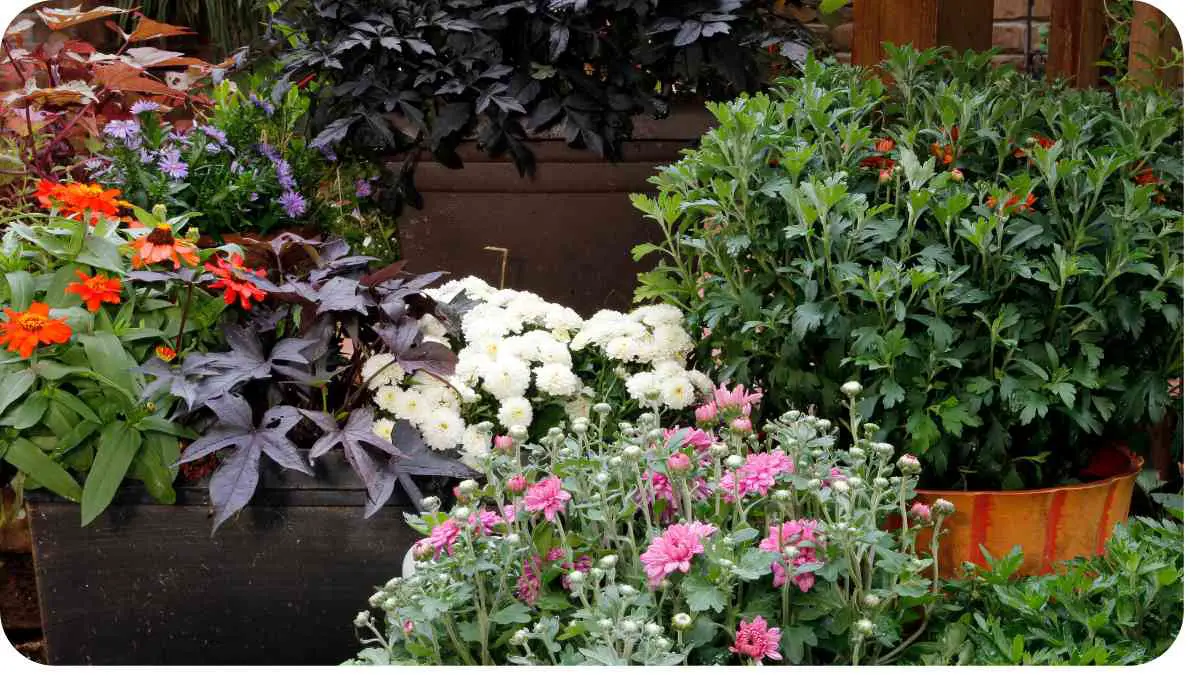Botanical gardens serve as living museums, showcasing a diverse array of plant species from around the world. However, with the privilege of housing such biodiversity comes the responsibility of ensuring that these plants do not escape and become invasive species.
In this article, we’ll explore the meticulous measures botanical gardens undertake to prevent the spread of their plants beyond their intended boundaries.
| Takeaways |
|---|
| Botanical gardens employ rigorous quarantine procedures to prevent the spread of invasive plants and diseases. |
| Regular inspection, monitoring, and integrated pest management strategies are essential for maintaining plant health and biodiversity. |
| Collaboration with experts and ongoing research are crucial for enhancing pest management efforts and developing innovative solutions. |
| Educating visitors about plant biosecurity and responsible gardening practices empowers them to contribute to conservation efforts. |
| By prioritizing plant containment and sustainability, botanical gardens play a vital role in protecting native ecosystems and preserving plant diversity. |
2. The Importance of Plant Containment
Maintaining plant containment is crucial not only for protecting native ecosystems but also for preserving the integrity of the botanical garden itself. A single escaped plant can wreak havoc on local biodiversity, outcompeting native species and altering entire ecosystems.
Moreover, invasive plants can be costly to manage and can negatively impact agriculture, forestry, and human health.
Many gardeners wonder, how birds contribute to their lawns’ health. Birds, with their natural pest control and soil aeration activities, play a crucial role in maintaining lawn biodiversity and reducing the need for chemical interventions.
3. Quarantine Procedures

Before any new plant enters a botanical garden, it must undergo rigorous quarantine procedures to ensure it is free from pests, diseases, and invasive potential. Quarantine areas are designed to isolate new arrivals from the existing plant collection until they are deemed safe for introduction.
Quarantine Process Table
| Procedure | Description |
|---|---|
| Inspection | Thorough examination of plant material for signs of pests, diseases, or abnormalities. |
| Pathogen Testing | Testing plant samples for known pathogens using molecular techniques such as PCR. |
| Observation Period | Monitoring plants over a specified period to detect any latent pests or diseases that may emerge. |
| Treatment | Application of appropriate measures, such as pesticides or fungicides, to eradicate any pests found. |
Through these procedures, botanical gardens mitigate the risk of introducing harmful organisms into their collections.
4. Inspection and Monitoring
Once plants are integrated into the garden, regular inspection and monitoring are essential to detect any signs of pest infestation or disease outbreak promptly. Garden staff conduct routine walkthroughs and utilize various monitoring techniques to ensure early detection and intervention.
In aquaponics systems, controlling snail populations is essential to prevent damage to plants and maintain water quality. Implementing physical barriers, introducing natural predators, or adjusting water parameters are effective methods to manage snails without harming the ecosystem
Inspection Checklist Table
| Aspect | Checklist Items |
|---|---|
| Plant Health | Leaf color, leaf shape, presence of pests or disease symptoms, growth patterns, and overall vitality. |
| Surrounding Environment | Soil moisture, drainage, light exposure, temperature, and presence of competing vegetation. |
| Pest Traps | Placement and monitoring of sticky traps, pheromone traps, and other pest monitoring devices. |
| Disease Surveillance | Regular sampling of plant tissues for laboratory analysis to detect pathogens before symptoms become evident. |
By systematically assessing these factors, garden staff can maintain plant health and prevent the spread of pests and diseases.
5. Disease Management Strategies
In the event of a pest or disease outbreak, botanical gardens employ various management strategies to control the spread and minimize damage to their plant collections.
Disease Management Table
| Strategy | Description |
|---|---|
| Cultural Practices | Implementing practices such as proper sanitation, pruning, and crop rotation to reduce disease pressure. |
| Biological Control | Introducing natural predators or parasites to control pest populations without the use of chemicals. |
| Chemical Control | Application of pesticides or fungicides as a last resort, following strict guidelines and regulations. |
| Genetic Resistance | Selecting and breeding plant varieties with natural resistance to common pests and diseases. |
By integrating these strategies into their management plans, botanical gardens can effectively combat plant diseases while minimizing environmental impact.
Adopting organic gardening practices can significantly enhance soil health and fertility. Techniques such as composting, crop rotation, and using natural pest control methods promote microbial activity, improve soil structure, and foster nutrient availability, resulting in thriving plant growth.
6. Integrated Pest Management (IPM)

Integrated Pest Management (IPM) is a holistic approach to pest control that emphasizes prevention, monitoring, and intervention strategies to minimize pesticide use and environmental impact. Botanical gardens employ various IPM techniques to manage pests effectively while safeguarding plant health and biodiversity.
IPM Techniques Table
| Technique | Description |
|---|---|
| Biological Control | Introduction of natural predators, parasitoids, or pathogens to regulate pest populations and maintain ecological balance. |
| Cultural Practices | Implementation of practices such as crop rotation, intercropping, and habitat manipulation to deter pests and enhance biodiversity. |
| Mechanical Control | Physical removal of pests using methods such as handpicking, trapping, or barriers to prevent access to vulnerable plants. |
| Chemical Control | Selective application of pesticides or insecticides as a last resort, following careful assessment and adherence to safety protocols. |
By combining these techniques, botanical gardens can effectively manage pests while minimizing reliance on chemical interventions, thereby promoting environmental sustainability.
7. Collaboration with Experts
Botanical gardens often collaborate with entomologists, plant pathologists, and other experts to enhance their pest management efforts. These partnerships enable gardens to access specialized knowledge, resources, and diagnostic tools to address complex pest and disease issues effectively.
Engaging with experts also fosters knowledge exchange and innovation, allowing botanical gardens to stay abreast of emerging threats and mitigation strategies. By leveraging external expertise, gardens can strengthen their pest management programs and enhance the resilience of their plant collections.
Utilizing compost in vegetable gardens offers numerous advantages for both plants and the environment. Compost enriches soil with essential nutrients, enhances moisture retention, suppresses diseases, and encourages beneficial microbial activity, leading to healthier plants and increased yields of nutritious produce.
8. Visitor Education
In addition to internal pest management measures, botanical gardens play a crucial role in educating visitors about the importance of plant biosecurity and responsible gardening practices. Interpretive signage, guided tours, and educational programs offer opportunities to raise awareness about invasive species, pest identification, and prevention strategies.
By empowering visitors with knowledge and skills, botanical gardens can enlist their support in safeguarding plant diversity and preventing the spread of pests and diseases. Educated visitors are more likely to adopt sustainable gardening practices and advocate for policies that protect native ecosystems.
9. Research and Development
Continuous research and development are essential for improving pest management techniques and developing new strategies to combat emerging threats. Botanical gardens often collaborate with research institutions and universities to conduct studies on plant-pathogen interactions, host resistance mechanisms, and sustainable pest control methods.
Through experimental gardens and field trials, researchers evaluate the efficacy of alternative pest management approaches and assess their impact on plant health and ecosystem dynamics. By investing in research and innovation, botanical gardens can stay ahead of pest and disease challenges and contribute valuable insights to the broader scientific community.
Rooftop gardens are created using various techniques to ensure structural integrity and optimal growing conditions. Employing lightweight growing media, installing proper drainage systems, and selecting suitable plant species are crucial steps in establishing successful rooftop gardens that contribute to urban biodiversity and environmental sustainability
10. Conclusion
In conclusion, botanical gardens employ a multifaceted approach to ensure their plants do not spread beyond their intended boundaries. From stringent quarantine procedures to integrated pest management strategies, these institutions are committed to maintaining plant containment while promoting biodiversity conservation and environmental stewardship.
By prioritizing plant biosecurity, collaborating with experts, educating visitors, and investing in research, botanical gardens play a vital role in protecting native ecosystems and preserving plant diversity for future generations. Through concerted efforts and collective action, we can mitigate the risks posed by invasive species and safeguard the integrity of our botanical heritage.
Further Reading
- Care and Its Publics: Populating Botanical Gardens
Explore the relationship between botanical gardens and the public, examining how these institutions serve as spaces for education, conservation, and community engagement. - 10 Ways to Keep Your Garden Healthy
Discover practical tips and techniques for maintaining a healthy garden, from proper watering and soil management to pest control and disease prevention. - Genebanks and Botanic Gardens
Learn about the role of genebanks and botanic gardens in preserving plant diversity and promoting climate-resilient collections for future generations.
FAQs
How do botanical gardens prevent the spread of invasive plants?
Botanical gardens implement stringent quarantine procedures for incoming plant materials, conduct regular inspections and monitoring, and employ integrated pest management strategies to control pest and disease outbreaks effectively.
What are some common pests and diseases that botanical gardens face?
Botanical gardens may encounter a variety of pests and diseases, including aphids, fungal pathogens, and invasive plant species. Regular monitoring and proactive management are essential to prevent their spread and minimize damage to plant collections.
How do botanical gardens collaborate with experts in pest management?
Botanical gardens often collaborate with entomologists, plant pathologists, and other specialists to enhance their pest management efforts. These partnerships enable gardens to access specialized knowledge, diagnostic tools, and research findings to address complex pest and disease issues effectively.
How can visitors contribute to plant biosecurity in botanical gardens?
Visitors can contribute to plant biosecurity by adhering to garden rules and regulations, refraining from bringing outside plants or plant materials into the garden, and reporting any signs of pest infestation or disease outbreak to garden staff promptly. Education and awareness-raising initiatives also empower visitors to adopt responsible gardening practices and advocate for plant conservation.
What role does research play in pest management at botanical gardens?
Research plays a crucial role in developing innovative pest management strategies, enhancing plant resistance to pests and diseases, and improving overall garden management practices. By investing in research and innovation, botanical gardens can stay ahead of emerging pest and disease challenges and contribute valuable insights to the broader scientific community.

